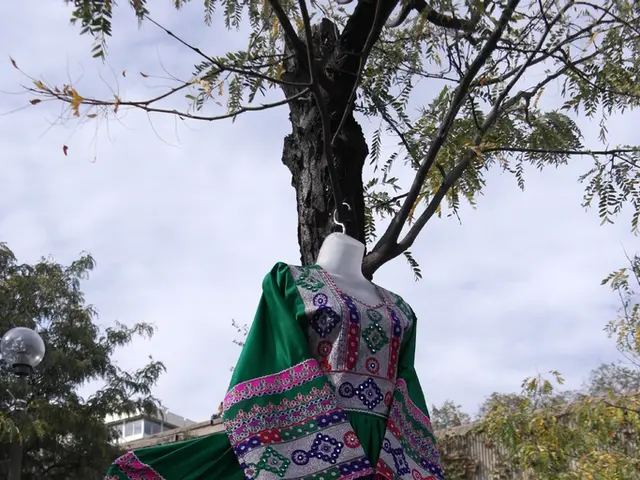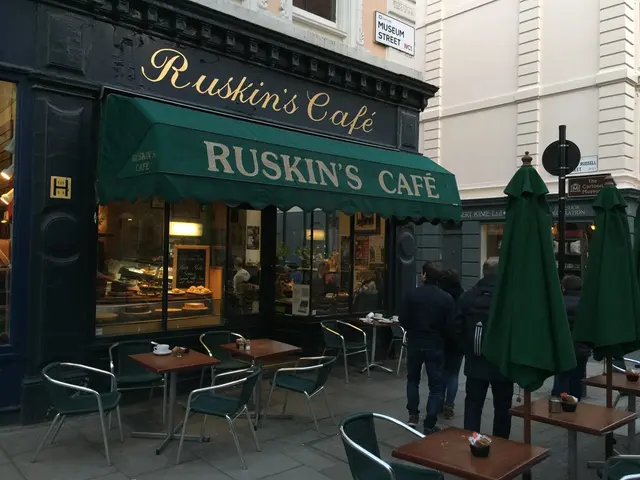Fashionable Footprint: The Emergence of Central Asian Style in London's Sartorial Landscape
Fashion Forward: Central Asian Design's Rise in London's Circles
London's fashion sphere is abuzz with a burgeoning trend, as Central Asian designs begin to leave their mark. With a focus on bold colors, intricate textiles, and artisanship dating back centuries, creative minds from the region are creating a stir with their contemporary take on traditional clothing.
From Tashkent to Bishkek, the creative community is actively channeling their native lands' visual language into fashion that resonates with today's savvy shoppers. In London, this newfound influence is becoming increasingly evident - from vibrant exhibitions in Shoreditch to curated collections in indie boutiques. The appeal is undeniable: it's a marriage of traditional silhouettes, Artisanal craftsmanship, and a chic, comfortable aesthetic tailored for the modern consumer.
This sudden interest is fueled by several factors. On one hand, London's Central Asian diaspora is eager to reconnect with their roots through fashion. On the other, the broader fashion industry is moving towards ethical production, modest fashion, and untold stories.
Meet Kamola Rustamova, a Tashkent-based designer whose brand Azukar Moreno encapsulates this East-West fusion. Her collection features unique pieces like ikat textiles reinvented in flamenco-inspired dresses and embroidered jackets with striking, structured sleeves, all coming together to form a globally-inspired yet deeply personal collection. A London client once told her, "I've never worn anything so striking in my life." It's a sentiment Rustamova is no stranger to, as her work has garnered a strong following within the Uzbek community in London - providing not just a reconnection to cultural memory but also a bold, self-expressive alternative to traditional styles.
"Wearing your culture, especially when it's reinterpreted for the present, feels empowering," says Rustamova.
Natavan Aliyeva, a Baku-based fashion designer, echoes these sentiments. She believes that the growing interest in Central Asian fashion transcends mere aesthetics - it's about forming a cultural connection. "There's something moving about these motifs," she notes, emphasizing how traditional patterns often reflect the region's stunning natural landscapes and rich artistic legacy.
Aliyeva believes the emotional resonance of these designs is just as strong as their visual impact. "These garments hold something of a comforting cocoon - a sense of serenity and protection - in their simplicity," she explains. This textural and psychological experience transcends mere style, offering wearers not only contemporary fashion but also a tranquil escape.
Preserving and celebrating their cultural heritage is central to Aliyeva's work. "Our roots are a source of strength and pride - they tell the story of who we are," she says.
Central Asian designs have also captured the attention of the British elite. Tolgonai Baira, a Kyrgyz-born fashion designer, revealed that even people close to the royal family have commissioned chapans from her atelier in Kyrgyzstan. Demand for this century-old garment remains high, with Baira attracting the interest of diplomatic circles and international clients alike.
As London's vibrant fashion scene expands, voices like yours are helping broaden the narrative. Central Asian fashion may still be on the rise, but it's doing so with confidence, color, and an unmistakable character. Indeed, in cities like Bishkek, Almaty, and Tashkent, a new generation of designers is reinterpreting traditional garments for global runways - and London wardrobes - proving that Central Asian fashion has a lot more to offer.
Highlight Image: Courtesy Kamola Rustamova
Contributor: Fuad Alakbarov
- As Central Asian designs continue to captivate London's fashion industry, these traditional elements are also making inroads into lifestyle and cultural conversations, with a growing number of events focused on home and garden featuring Central Asian decor and furniture.
- Not confined to fashion and clothing, the influence of Central Asian cultural heritage stretches into travel as well, as travel enthusiasts seek out unique experiences immersed in traditional lifestyles, visiting historic sites, and embracing the region's hospitality while exploring the rich tapestry of the culture.






